Whether you're visiting Indonesia for a short trip or planning a long-term stay, at some point, you might find yourself in need of new clothes or footwear.
Indonesia operates on its own unique sizing system, which can be perplexing for foreigners seeking to align these sizes with international standards like European, US, or UK sizing.
The challenge for visitors arises from the absence of readily available conversion tables. Despite conducting extensive research online and in stores, there's no straightforward method to convert Indonesian sizes to other international standards.
Recognizing this gap, bali.live has conducted an investigation into this issue and presents a clothing and footwear size conversion guide for Indonesia.
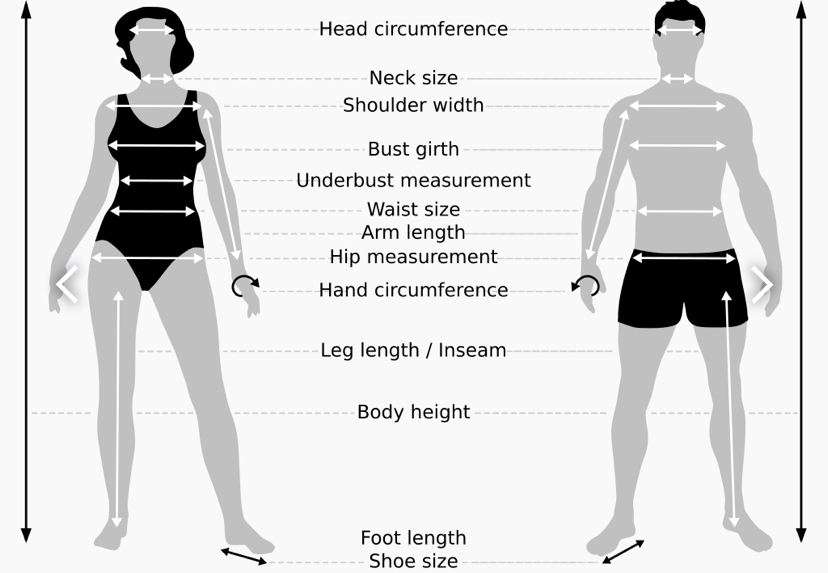
Stores Covered in This Article
This article focuses on local Indonesian shops such as Matahari, oleh-oleh shops, and others, excluding international brands like Adidas or Nike, which provide their own sizing charts and conversions.
Matahari
Matahari is a leading Indonesian retailer offering fashion, footwear, beauty, and lifestyle products. Established in 1958, it is currently the largest retail platform in Indonesia. Matahari serves the growing Indonesian middle class with quality merchandise across various categories.
Bandung Collection
A recent addition to Indonesia's fashion retail scene, Bandung Collection stands out for its diverse range of fashion items at affordable prices.
Payless ShoeSource
Located in Discovery Mall, Kuta, Bali, Payless ShoeSource is one of three outlets operated by this Indonesian company, with additional locations in Java. Specializing in locally made footwear and accessories, they offer a variety of styles from casual to work and fashion. Payless ShoeSource is renowned for its affordable prices, and their footwear is noted for its decent quality and durability.
Navigating Indonesian Sizing
Indonesia employs its own sizing system, although not all brands follow it consistently. For clothing, it uses Asian letters like S, M, L for upperwear, and numerical sizes for trousers. Footwear is sized using numbers.
Although footwear sizing follows the European system, Indonesian sizes tend to run smaller. Typically, the difference is around one or two sizes compared to their European counterparts. For example, a woman who wears size 38 in European shoes might need size 39-40 in Indonesia. Similarly, a man who wears size 41 in European shoes should look for size 42 when shopping local brands.
Sources of Variability
Note that figuring out your size in Indonesia does not always guarantee a perfect fit. This can be attributed to several factors:
Between-Brand Variation: Different brands use slightly different sizing conventions. This ambiguity means a marked size 39 could vary depending on whether the brand follows the Indonesian or European manufacturing standards. Unfortunately, most vendors do not explicitly state which convention they use.
Within-Store Variation: Within the same branded store, footwear can vary in width and length. For example, at Matahari, you might fit size 39 in some models and size 40 or even 41 in others. The reason for this is that footwear comes from different brands with varying manufacturing standards (as noted above).
Width of Foot: The width of shoes can vary significantly from pair to pair. For instance, a European size 37 shoe typically translates to size 39 in Indonesia. However, if you have a narrow foot, you might find that size 39 is too wide for your foot.
Impact of Sizing Variability on Consumers
For consumers, this variability means:
Fit Uncertainty: There's no guarantee that a shoe marked with your size will fit perfectly without trying it on first.
Online Shopping Challenges: Indonesian outlets often have a no-return policy, complicating online clothing purchases. Buying shoes online is particularly challenging due to inconsistent sizing standards. Even when you know your Indonesian size, there may be variations between models.
Resale Market Complexities: Shoes bought online that don't fit are often resold in online communities, where the sizing convention used is typically not specified either. When someone lists footwear as size 37, it could refer to either a standard European size or a smaller size tailored for the Asian market.
Shopping Considerations for Bigger Sizes
For taller and larger individuals, finding well-fitting clothing and footwear in local Indonesian shops can be tricky. Here are some specific challenges faced in Indonesian stores:
- Upperwear: XXL is typically the largest size available, roughly equivalent to European size 42 for women and size 54 for men. Finding larger sizes beyond this can be very difficult.
- Footwear for Women: Women needing sizes larger than European size 39 may struggle to find suitable options.
- Footwear for Men: Men needing sizes larger than European size 47 will also encounter challenges in finding appropriate shoes that fit comfortably.
Advice for Online Shoppers
Bali.live advises against purchasing online from brands where you haven't shopped before and aren't familiar with the sizing convention they use. Even if you see a familiar number, like 39 for shoes, you have no way of telling whether this number corresponds to a European or Indonesian manufacturing standards. It's always recommended to try on clothes and footwear in-store to ensure a good fit before considering purchasing from that store online.
If you're buying from online communities, always check with the seller about the exact sizing. Conversely, if you're selling your items, be explicit about the actual size of the item (e.g., "says 37 but feels more like 36" is a helpful description).
Indonesian to European Size Conversion Guide
Trousers
If you want to find your trousers size, start by measuring your waist in inches or centimeters.
Indonesian sizes generally correspond directly to waist measurements in inches.
A side note: European sizes for trousers are often determined by dividing the waist measurement in centimeters by 2. For example, if your waist measures 81 cm, the European size would typically be around 40 (81 / 2).
The tables below provide conversion charts between Indonesian and European sizes for women's and men's trousers.
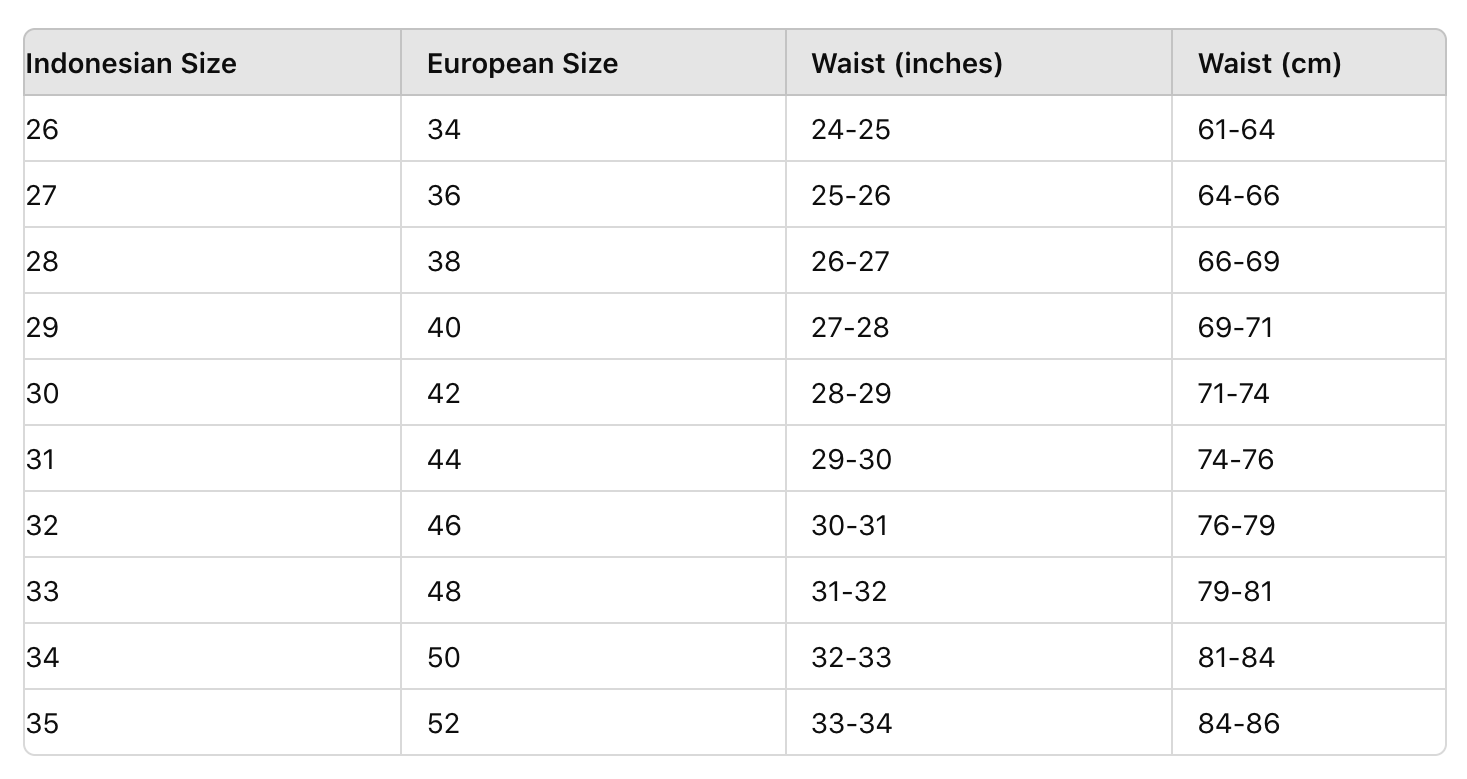
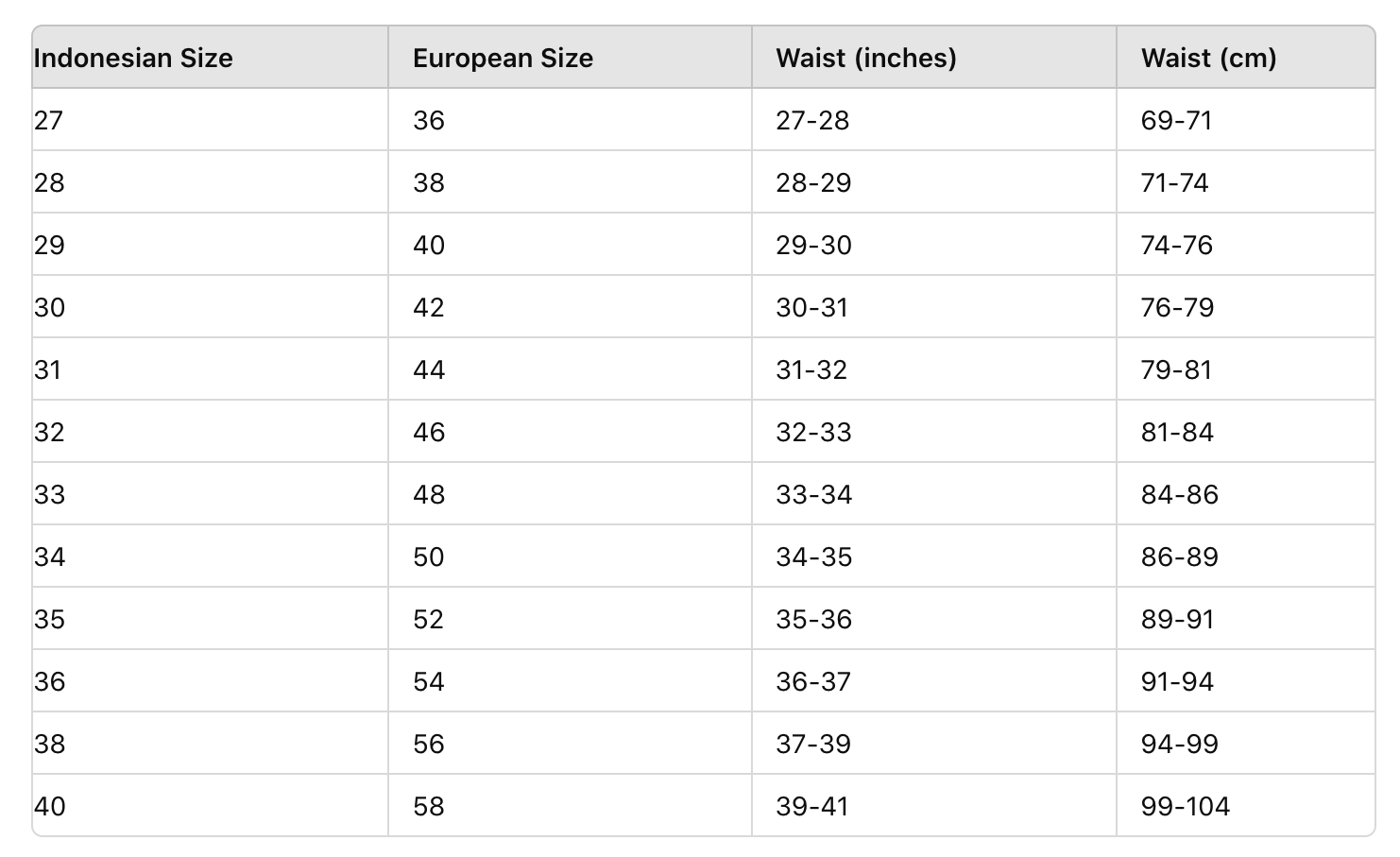
Please note that sizing can vary slightly between different brands and retailers.
Shirts
Indonesian upperwear sizes are typically indicated by the letters: XS, S, M, L, XL. Occasionally, numbers 36-48 might be used.
The tables below provide conversion charts between Indonesian and European sizes for women's and men's shirts.
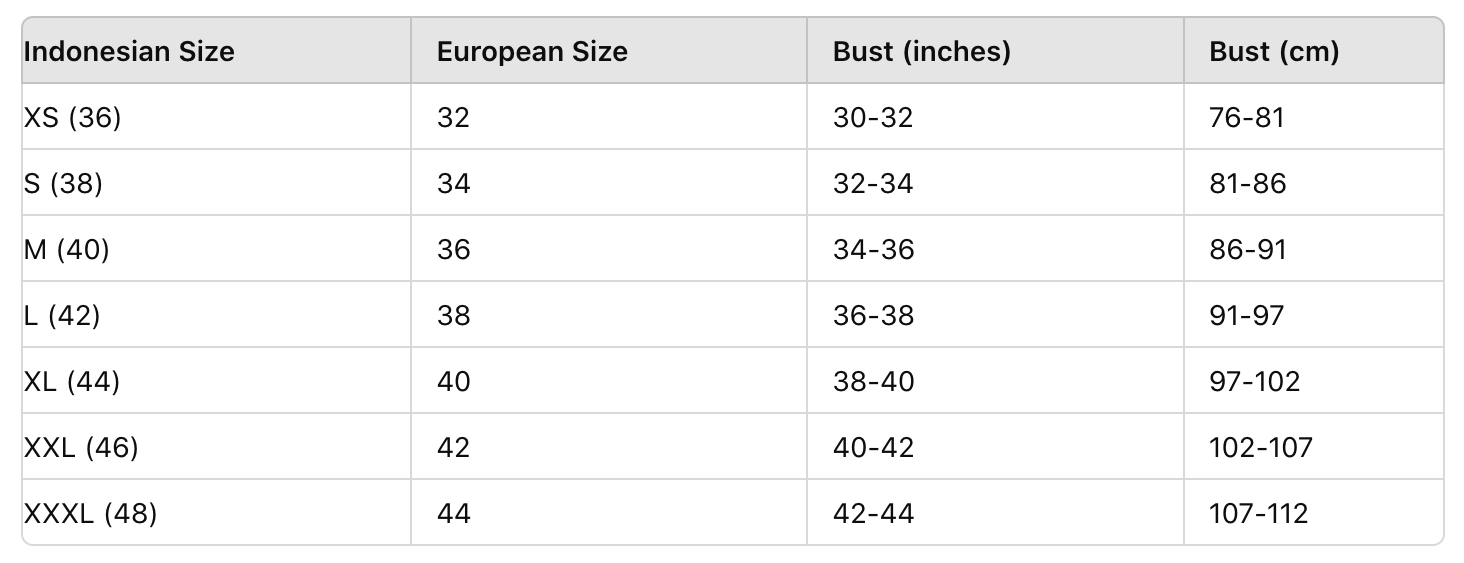
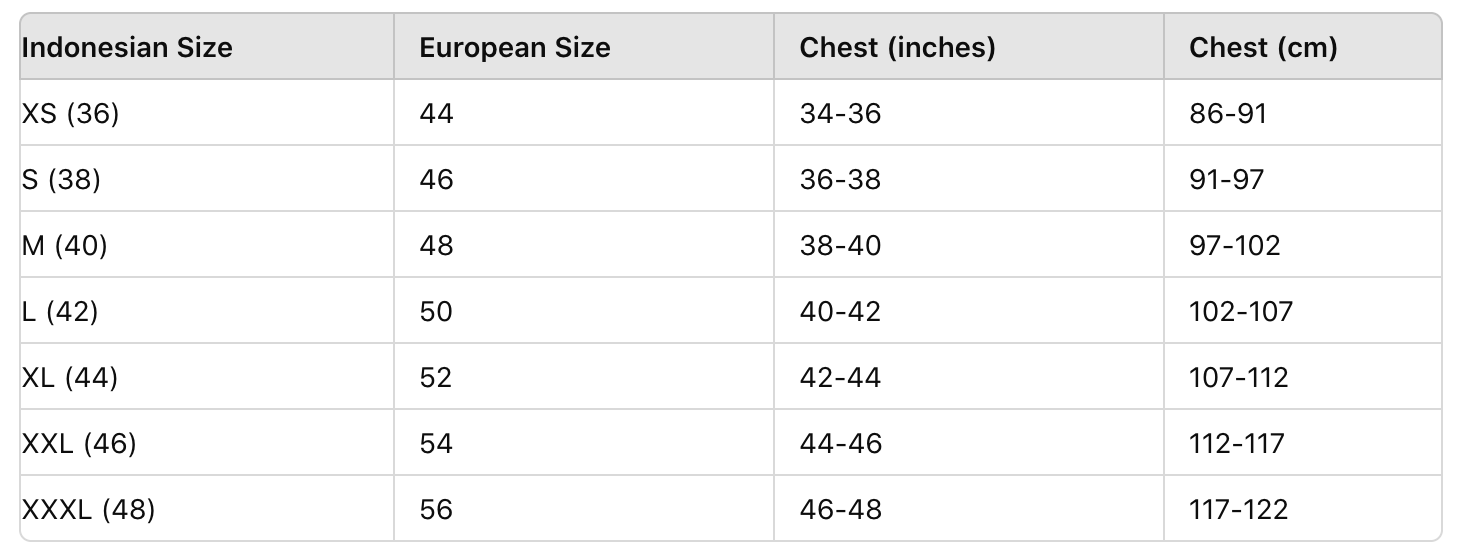
Here again, please note that sizing can vary slightly between different brands and retailers.
Footwear
Below are tables for women's and men's shoe sizes comparing Indonesian, UK, USA, European, Australian, Chinese, and Japanese sizes:
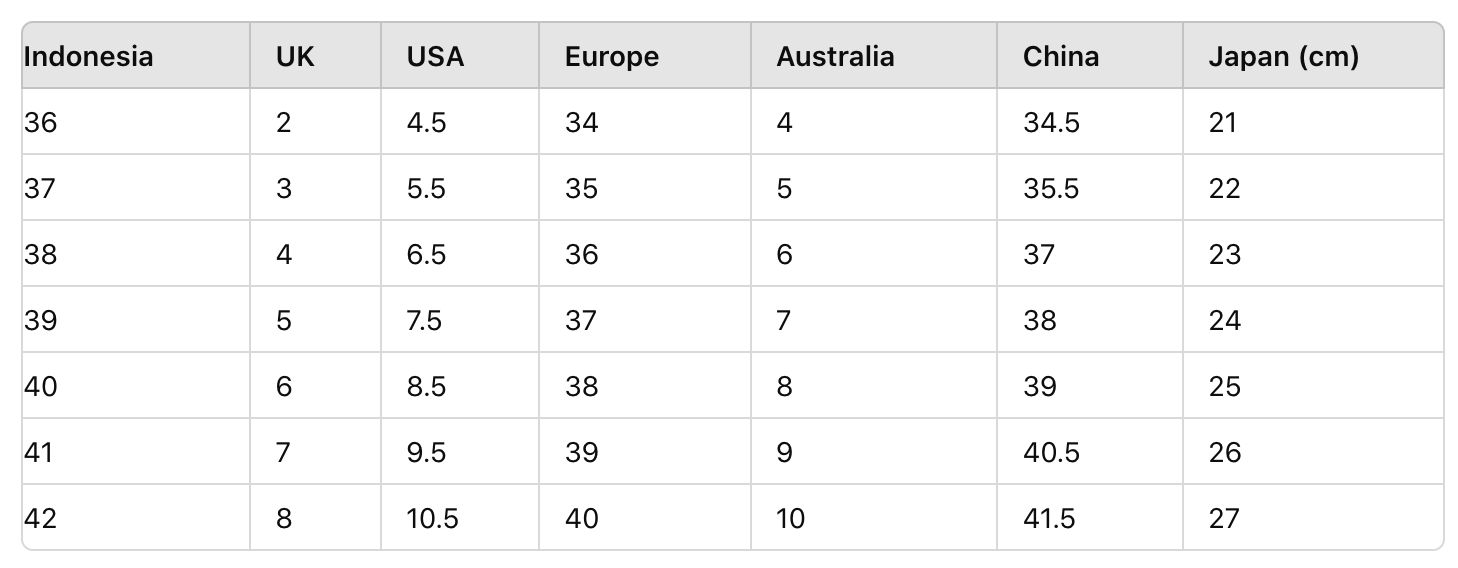
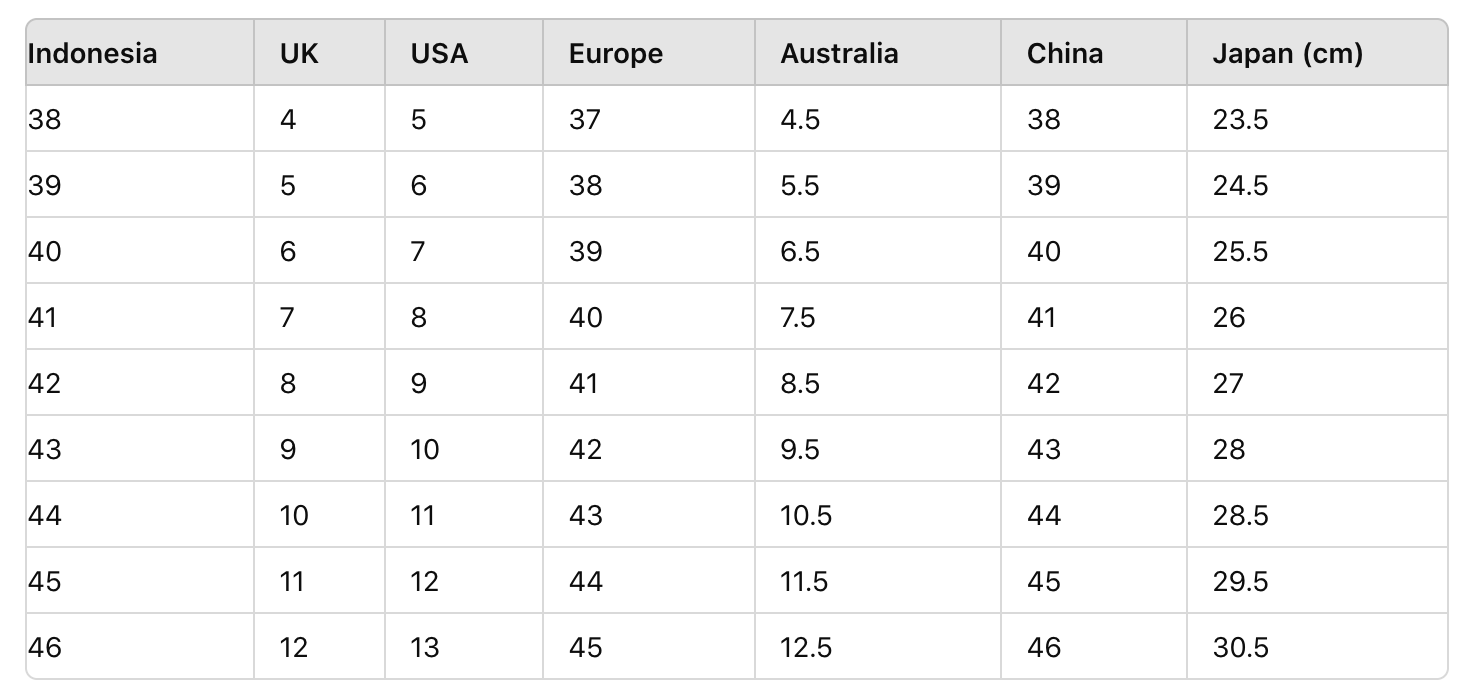
Notes:
- Japan (cm) column represents foot length in centimeters corresponding to each size.
- The sizes listed are approximate and may vary between brands.
Conclusion
Navigating clothing and footwear sizes in Indonesia poses a distinctive challenge for Western visitors, influenced by the country's manufacturing standards geared towards the Asian market and the varying norms across different brands.
While our guide provides a foundational understanding of Indonesian sizes and their European counterparts, we encourage shoppers to always try on items in-store whenever possible to ensure the best fit.
For those exploring online options, thorough communication with sellers regarding sizing specifics is crucial to avoid disappointment.
Happy shopping!
Yours, Ibu Tan
You can add one right now!